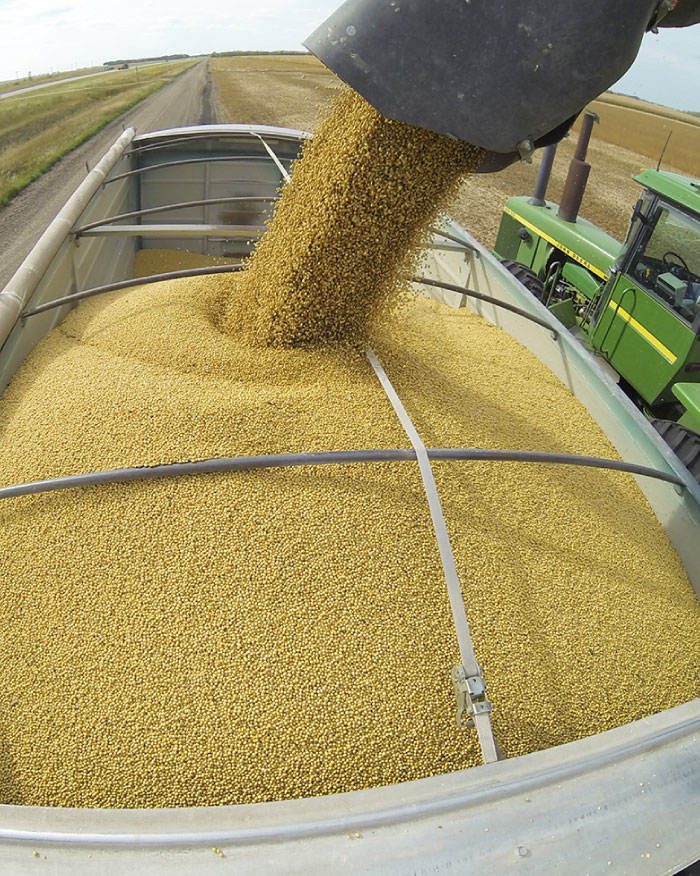Get the Best Price for Your Soybeans

By: Teresa Falk
A grower wears many hats – and one of those is grain marketer. After working hard all season to hopefully produce a high-yielding and high quality soybean crop, the grower’s next challenge is getting the best possible price for that crop.
Jonathon Driedger with FarmLink Marketing Solutions says there’s no magic bullet when it comes to marketing grain. “Markets are unpredictable and it’s always very difficult to consistently hit the highs in the market,” says the senior market analyst based in Winnipeg, Manitoba.
Driedger says marketing soybeans is very similar to most other crops; however, cash brokers may have a bigger role since there’s still a fair bit of direct truck business into northern U.S. elevators and crushers. And Driedger notes that hedging is easier with this crop than many others because soybeans have a liquid futures and options market.
Driedger shares a few points that growers should keep in mind when trying to get the best price for their soybeans this fall.
Growers need to know their own on-farm needs, says Driedger. It’s important to know how much grain needs to move within certain windows for storage, cash flow, or other needs, as well as costs and margin goals, he notes. This will help in making sales that fit the needs of the farm. For example, if the market has experienced a rally, and has reached a price that results in meeting a farm’s ROI (return on investment) targets, and also helps with movement in fall because of a lack of bin space, then chances are this would be a good sale for the farm.

Alan Kluis, president of Kluis Commodities, agrees and says a grower has to make a decision if he’ll sell off the combine or store the crop. “Price, storage, and the need for cash flow would be the main drivers in their decision to store or sell,” says Kluis, who’s based in Minneapolis, Minnesota.
If a grower doesn’t have on-farm storage and has to pay for commercial storage, this runs up a large bill and then they may be better off to turn it into cash, he says, adding, a lot of farmers are dealing with borrowed money – in that case they may want to sell the crop and pay off their loan.
Kluis recommends that growers try to have 80 percent of their soybean crop sold this fall.
Both Kluis and Driedger also encourage growers to seek out sound, credible, and neutral market research and advice. “No service has that perfect crystal ball, but with good research they can keep farmers abreast of market events and trends, factors that will affect prices going forward and help in developing an opinion around downside risk and upside opportunity,” says Driedger.
Some social media savvy growers are turning to Twitter for marketing information and advice. Kluis encourages growers to evaluate the source. “Some of the information is inaccurate. You have to look at the source and determine what their purpose is for doing it,” he says.
Driedger cautions against relying on social media like Twitter too heavily. He suggests growers rather use it to complement other reliable market information services or subscriptions. “And make sure you follow a combination of both farmers, but also other credible industry people to make sure you get a balanced flow of comments coming through on Twitter,” he says.
Both FarmLink Marketing Solutions and Kluis Commodities offer various marketing services for soybean growers. For more information on these services visit the websites – www.farmlinksolutions.ca and www.alkluis.com.


